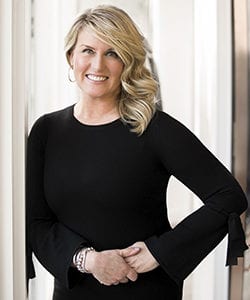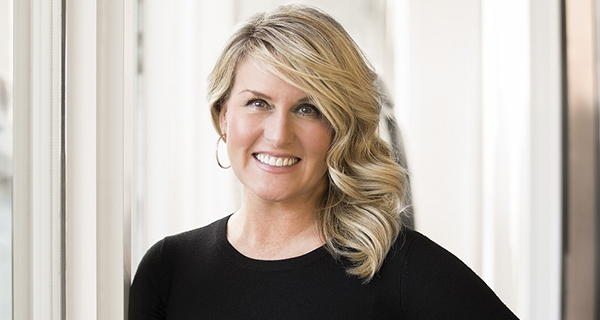Margot Schulman is owner and CEO of Schulman Design.

Margot Schulman
What is Schulman Design and what do you do?
Schulman: We are a full-service commercial and residential interior design firm focused on universal design and fostering well-being for all people, especially those with accessibility and mobility needs.
What sets us apart is that we take a humanitarian approach to our work. We believe everyone deserves to live their best life, with independence, social connections, physical activity, health and joy. Whether you’re 25 years old and confined to a wheelchair or 94 and a great-grandparent, experiencing life to the fullest is everyone’s ultimate desire. That’s why we customize all our design solutions to meet our clients’ specific lifestyle needs.
What most people don’t realize about interior designers is that we’re involved in projects from the ground up. My team and I have decades of experience in the industry with corporate, health care, hospitality, multi-family developments and residential clients.
For both new-build construction and renovations, we are part of the team from preliminary design through procurement and project turnover. We also offer accessibility audits and recommendations. Our projects range from 1,500 square feet to 140,000 square feet, and we are integral to project management, tendering and scheduling.
What’s the history behind the establishment of the company and your background?
Schulman: I always say that my life has been orchestrated to do exactly what I’m doing today. When my brother and I were pre-teens, he was in a catastrophic biking accident that resulted in a severe brain injury and rendered him a spastic quadriplegic. My family and I spent 20 years navigating health-care systems and he lived much of his life in seniors’ facilities. These were not ideal for living a full life as a young adult, but there were no other options.
My family advocated on his behalf and eventually spearheaded a “home within a home” for men with brain injuries at the Sherbrooke Centre in Saskatchewan. For the last few years of his life, he lived as a family with these young men and their dog ABI (an acronym for Acquired Brain Injury). This experience inspired my lifelong passion for supporting the aging population and those with physical and cognitive disabilities.
I believe that institutions can further disable people and how space is designed defines how people live and work. I just knew there had to be a better way to create environments where all people could thrive, regardless of age or ability. Pushing a wheelchair in the ’80s made me realize that the smallest universal design options can be great for everyone. Design changes made life easier and more enjoyable for my brother and everyone in his life.
What are the key trends you see today in home design?
Schulman: We’re at a critical point in our population’s demographics. The Alberta seniors population will nearly double to 1.18 million in the next 20 years. Forty-seven per cent of people 75 years and over live with a disability. People of any age experiencing permanent or temporary disabilities continue to blaze new trails on how they want to live – and rightfully so.
As a result, people are seeking homes (private or shared) that allow them to enjoy their favourite activities and continue the day-to-day responsibilities, like laundry and cooking, that many of us take for granted.
Technology that connects people and makes life easier is also an emerging trend in home design. And there’s a movement towards the village approach to living where people are connected and lend a helping hand to one another. For interior design, this means much more than adding a wheelchair ramp or wider doorways. It’s everything from the type of flooring we choose, material textures, counter heights, storage convenience, natural light and access to the outdoors, social connections, and being able to navigate their home with ease. What’s vital is that someone’s home doesn’t look like a medical facility.
Most people don’t design their homes to look like hospitals so why should people with mobility challenges feel like they are living in an institution?
For Schulman Design, we incorporate modifications into the space seamlessly in a way that enhances the way it functions as well as the way it looks and feels when you’re in it. Our clients are often shocked at how good it looks.
What is Curatta and what does it do?
Schulman: Curatta is my passion project. Our vision is that people experiencing dementia live in an engaging community that honours their well-being. Curatta will transform how we care for people experiencing dementia, using a unique village design and drawing from the latest best practices in dementia care
Our model doesn’t focus solely on someone’s diagnosis; we consider the whole person – their history, personality, lifestyle preferences and what brings them joy. We combine this with a community design (a neighbourhood approach) that promotes independence, social connections, healthy lifestyles, growth, and fun.
We hope that families will feel comfortable leaving their loved ones in our care, yet excited to visit and participate in activities whenever they want. It will also be someone’s forever home, incorporating features to make palliative care as comfortable as possible during the final stages in life.
We’re just fine-tuning our concept and business plan and seeking investors. Almost everyone is touched by dementia in some way these days, so we see a great deal of interest in this project, and we’re eager to take it to the next level.
What has been the biggest challenge you’ve faced in being an entrepreneur?
Schulman: I have spent my whole life breaking down barriers. As an entrepreneur and gerontologist serving our most vulnerable people, I am always advocating for others and influencing people to understand how design has such a profound impact on individuals with mobility or cognitive challenges.
Baby boomers – arguably the most influential generation today – don’t want to think about modifying their homes to accommodate accessibility needs down the road. At the same time, they plan for their financial future well before retiring. Even though most people want to remain in their homes and communities (and will renovate when the time comes), investing up front to prepare for their aging needs hasn’t been a priority, until now.
One of my favourite sayings is that “it’s always too early until it’s too late.” People haven’t wanted what I was selling because we are so fearful of aging. I believe there is true beauty in aging … and it’s a lot better than the alternative!
– Mario Toneguzzi
The views, opinions and positions expressed by columnists and contributors are the author’s alone. They do not inherently or expressly reflect the views, opinions and/or positions of our publication.

